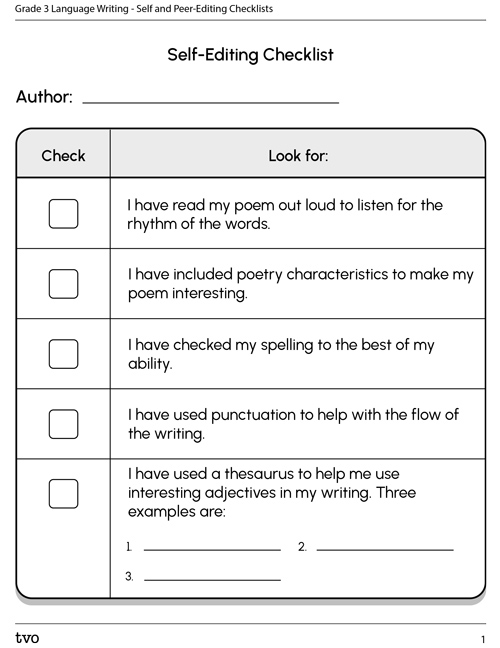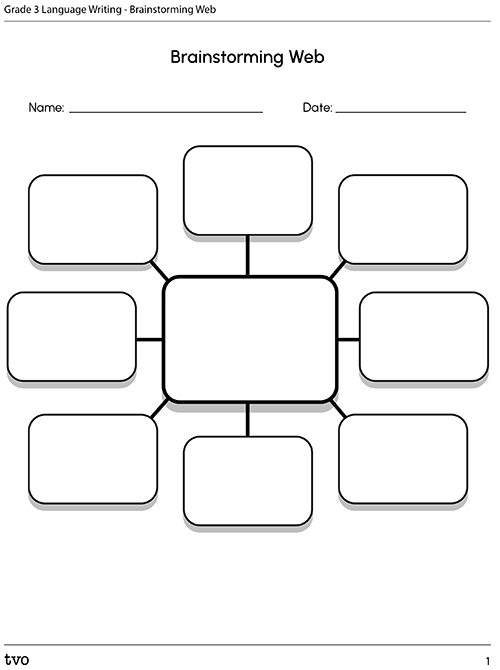Minds On
What is a poem?
Have you ever experienced something that you wanted to capture in words? Perhaps you ate something delicious or found something very beautiful. Or, maybe you woke up feeling absolutely terrible one morning and just needed to write that feeling down.

Poetry is a form of writing where words are thoughtfully chosen and arranged by the writer for their meaning, sound, and rhythm. Some poems are meant to be funny, others can tell a story, some may have a musical quality while others are written to celebrate a special occasion. Poetry can be found in many different forms and styles.
Characteristics of poetry

While many styles of poetry follow a very structured format, some may not follow any rules at all. Use the Elements of Poetry in your notebook or use the following fillable and printable document to help you get started.
| Elements of Poetry | |
|---|---|
| Stanza | A group of lines in a poem. |
| Rhyme | Two or more words that share the same ending or sound similar. Rhymes are often found at the ends of lines in a poem. |
| Figurative Language | Words that are used to describe something and create a picture in the reader's
mind.
For example: The feathers rippled gently in the wind. |
| Simile | Comparing two things that aren't alike but that have something in common using
the word 'like.'
For example: The food was piled on the table like a castle. |
| Metaphor | Comparing two things that aren't alike but that have something in common.
For example: She is a raven. |
| Repetition | Words or lines that are repeated. |
| Line | A single row of words in a poem. |
| Theme | The message of the poem. |
| Mood | The feeling of the poem. |
| Rhythm | The beat, sound and feel of the poem. |
| Personification | Giving a non-animate object human qualities.
For example: The chair hugged me tightly. |
Press the ‘Activity’ button to access the Elements of Poetry.
Action
Brainstorming and planning for your poem
Poetry can be found in the world around us. It can be found in books, in music, in the dog that walks by you every morning, in the smells of the garbage trucks, in the food that you eat, in drops of rain… the world is full of poems just waiting to be written. Consider the example of a poem below. What is it about? There are also many different kinds of poems. Below is a table that explores 4 different kinds of poems.
Press the ‘Activity’ button to access the Different Kinds of Poems.
Brainstorming
Take some time to think about topics that you may like to write a poem about. It may help to sit in a quiet place where you can gather some inspiration from the world around you. Try to use all of your senses when you are coming up with your ideas.
Complete the Brainstorming Web in your notebook or use the following fillable and printable document to help you get started.
It might be difficult to choose just one of your ideas from your brainstorm, but you can always return to your brainstorm page for inspiration for future poems!
Planning
Poetry may not necessarily follow the same Writer’s Process that you are used to. Often times, once you have chosen your topic, you may be ready to dive into drafting your poem. On the other hand, you may find it useful to brainstorm images, words and ideas that really help to capture your poem before the drafting stage.

Consolidation
Drafting, revising, and publishing your poem
Drafting
Before beginning your draft, decide what kind of poem you might like to write. You may also choose to do a poem that does not follow any rules at all. You may even decide to write a variety of poems on the same topic! Use the Different Kinds of Poems in your notebook or use the following fillable and printable document to help you get started.
Press the ‘Activity’ button to access the Different Kinds of Poems.
The use of describing words (adjectives) will likely play an important role in your poem. If you find that you are struggling to find just the right descriptive word, consider using a thesaurus to help you!
Revising
Poets read their writing over and over to see if they can make their poem even better. Try reading your poem out loud to see if there are places where you can add additional poetry characteristics. Is there a place where the rhythm does not quite work? Would your poem be better if you could add some alliteration or more imagery? Perhaps there is a place where you might want to consider shifting a word to the next line. The way you choose to arrange your lines, the words you choose and the poetry characteristics you include, can really change how your poem sounds and how the reader feels when they are reading it.
Once you feel you are all done revising your work, if possible find a fellow poet and read your poem out loud together.
Complete the Self-Editing and Peer-Editing Checklist in your notebook or use the following fillable and printable document to help your revision process.

Press the Activity button to access the Self-Editing and Peer-Editing Checklist.
Activity (Open PDF in a new tab)Publishing
What a lot of work you have put into your poem! You are now ready to publish your work. Using your very best handwriting, rewrite your poem with all the revisions for a final draft. Do you prefer typing your letter on a computer?
Even at this stage, you may still come up with a word you want to change or an additional characteristic you’d like to add. It’s not too late to add those in! In fact, every time you reread your work, you may find another place to make it even better – that is what good writers do!
Reflection
How do you feel about what you have learned in this activity? Which of the next four sentences best matches how you are feeling about your learning? Press the button that is beside this sentence.
I feel...
Now, record your ideas about your feelings using a voice recorder, speech-to-text, or writing tool.
